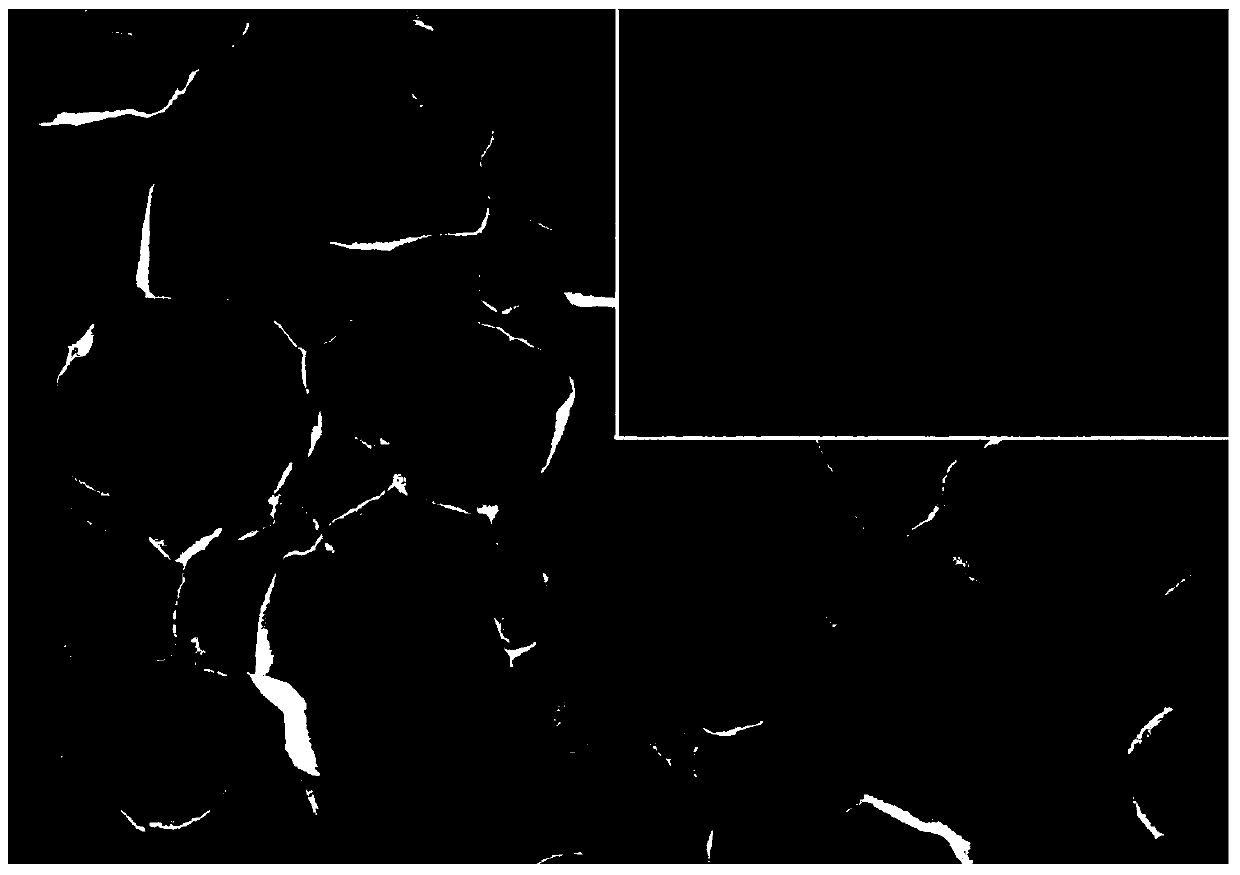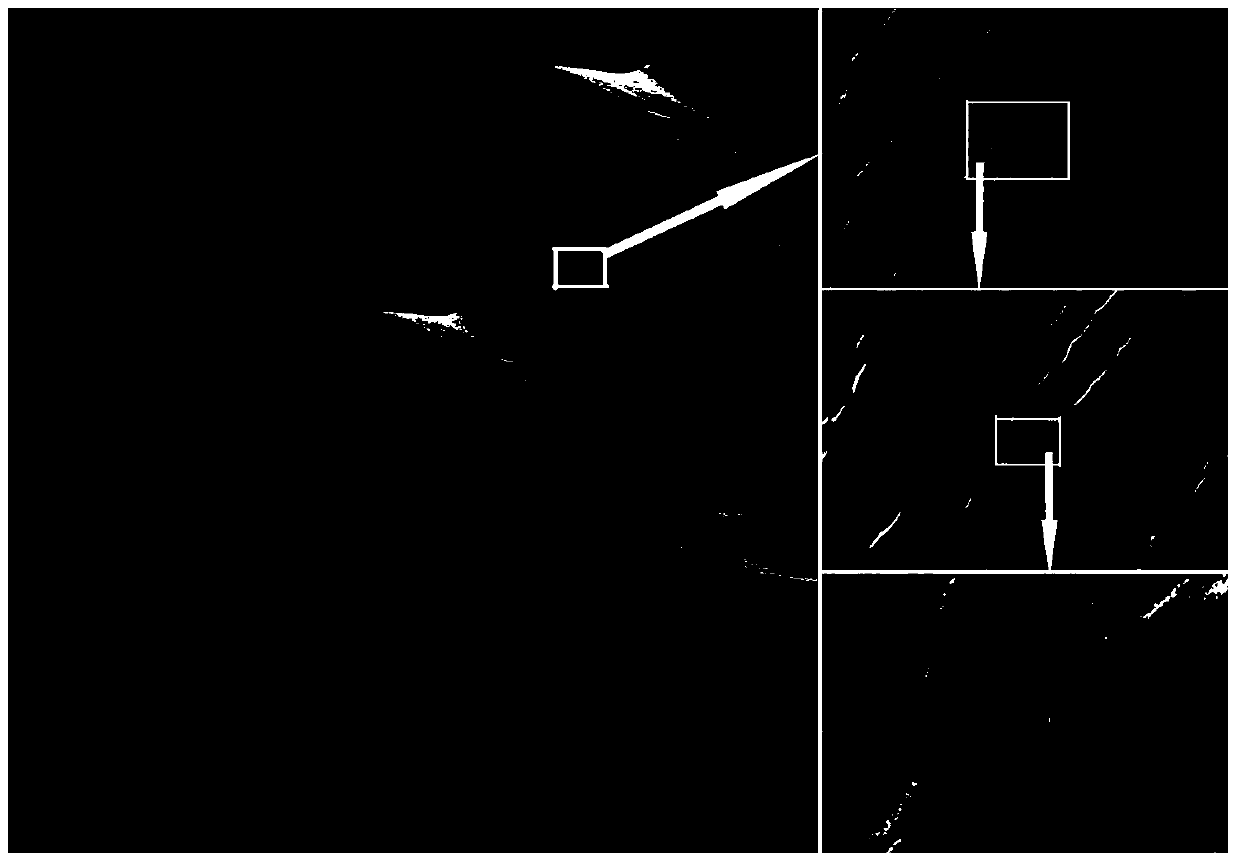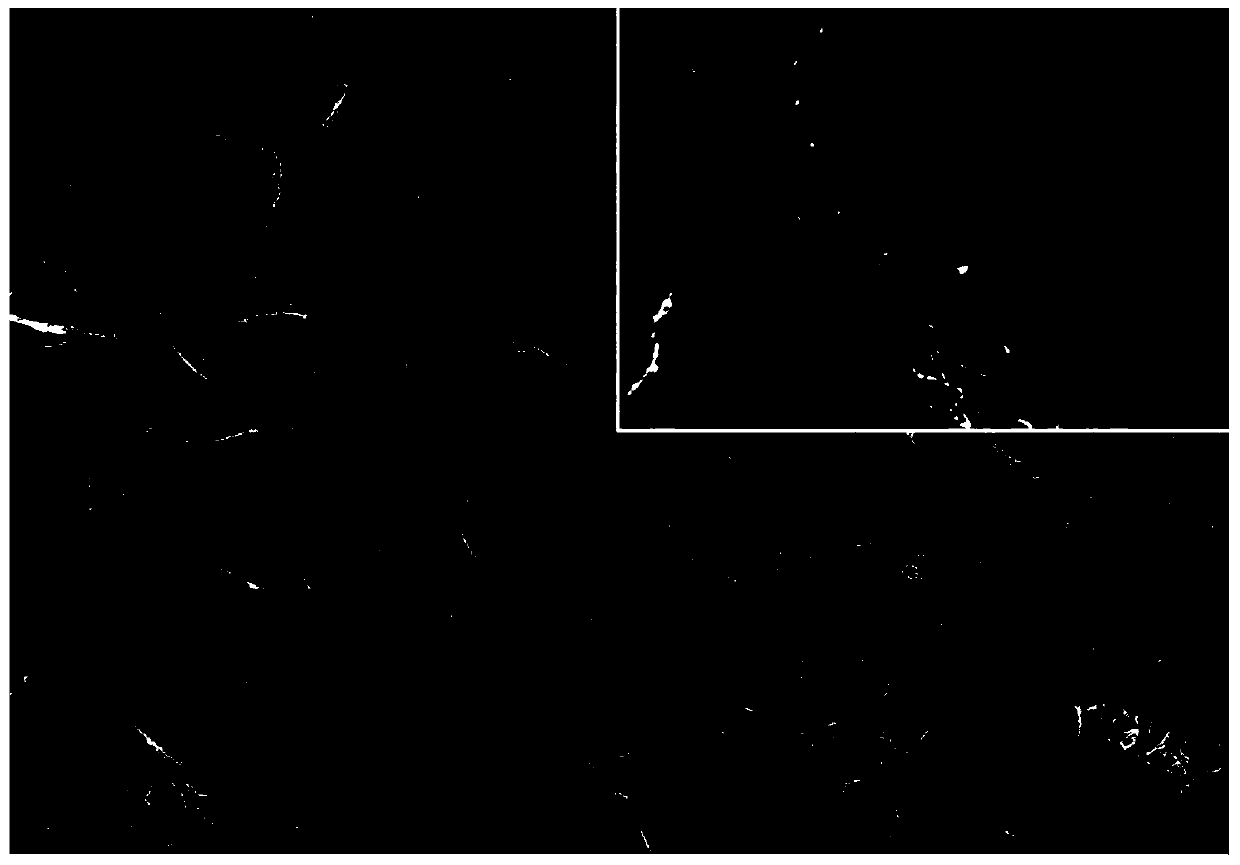Method for preparing titanium implant and obtained titanium implant
An implant and matrix technology, applied in the field of medical materials, can solve the problems of unfavorable cell adhesion, proliferation, differentiation and functional expression, compatibility and limited binding ability, etc., to increase compatibility and binding ability, and improve osseointegration ability Effect
- Summary
- Abstract
- Description
- Claims
- Application Information
AI Technical Summary
Problems solved by technology
Method used
Image
Examples
Embodiment 1
[0022] Step A) Process the implant matrix with pure titanium, polish the surface of the implant matrix, then ultrasonically clean with acetone, absolute ethanol and deionized water for 30 minutes, and dry naturally;
[0023] Step B) Put the implant matrix into the prepared mixed acid solution (HNO 3 : HF volume ratio of 5:1) for 10 minutes of ultrasonic treatment, the outer surface of the implant matrix was corroded into a structural layer with micron roughness, and then ultrasonically cleaned with absolute ethanol and deionized water for 10 minutes, and dried naturally, see figure 1 shown;
[0024] Step C) Using constant voltage direct current anodizing technology to in-situ oxidize the microstructure surface of the implant matrix into a titanium oxide nanotube film, the specific process parameters are: the implant matrix is the anode, the graphite electrode is the cathode, and the electrolyte composition is 1.0 % hydrofluoric acid solution, the working voltage is 20V, the...
Embodiment 2
[0026] Step A) Process the implant matrix with pure titanium, polish the surface of the implant matrix, then ultrasonically clean with acetone, absolute ethanol and deionized water for 30 minutes, and dry naturally;
[0027] Step B) Put the implant matrix into the configured diluted concentration of 40% mixed acid solution (HNO 3 : HF volume ratio is 5:1) for 5 minutes of ultrasonic cleaning, followed by ultrasonic cleaning with absolute ethanol and deionized water for 10 minutes, and natural drying;
[0028] Step C) Using constant voltage direct current anodizing technology to in-situ oxidize the microstructure surface of the implant matrix into a titanium oxide nanotube film, the process parameters of the matrix are: the implant matrix is the anode, the platinum sheet electrode is the cathode, and the electrolyte is composed of 0.5% hydrofluoric acid solution, the working voltage is 25V, the oxidation time is 1.5 hours, and the reaction temperature is room temperature; the...
Embodiment 3
[0030] Step A) Process the implant matrix with pure titanium, polish the surface of the implant matrix, then ultrasonically clean with acetone, absolute ethanol and deionized water for 30 minutes, and dry naturally;
[0031] Step B) Perform mechanical sandblasting on the implant matrix, and grind the outer surface of the implant matrix into a structural layer with micron roughness, see image 3 shown;
[0032] Step C) Using constant voltage direct current anodic oxidation technology, in-situ oxidation of the microstructure surface of the implant matrix into a titanium oxide nanotube film, the specific process parameters are: the implant matrix is the anode, the platinum electrode is the cathode, and the electrolyte is composed of 0.7% hydrofluoric acid solution, the working voltage is 20V, the oxidation time is 1 hour, and the reaction temperature is room temperature; then ultrasonic cleaning with deionized water for 5 minutes and natural drying to obtain a bionic titanium i...
PUM
 Login to View More
Login to View More Abstract
Description
Claims
Application Information
 Login to View More
Login to View More - R&D
- Intellectual Property
- Life Sciences
- Materials
- Tech Scout
- Unparalleled Data Quality
- Higher Quality Content
- 60% Fewer Hallucinations
Browse by: Latest US Patents, China's latest patents, Technical Efficacy Thesaurus, Application Domain, Technology Topic, Popular Technical Reports.
© 2025 PatSnap. All rights reserved.Legal|Privacy policy|Modern Slavery Act Transparency Statement|Sitemap|About US| Contact US: help@patsnap.com



